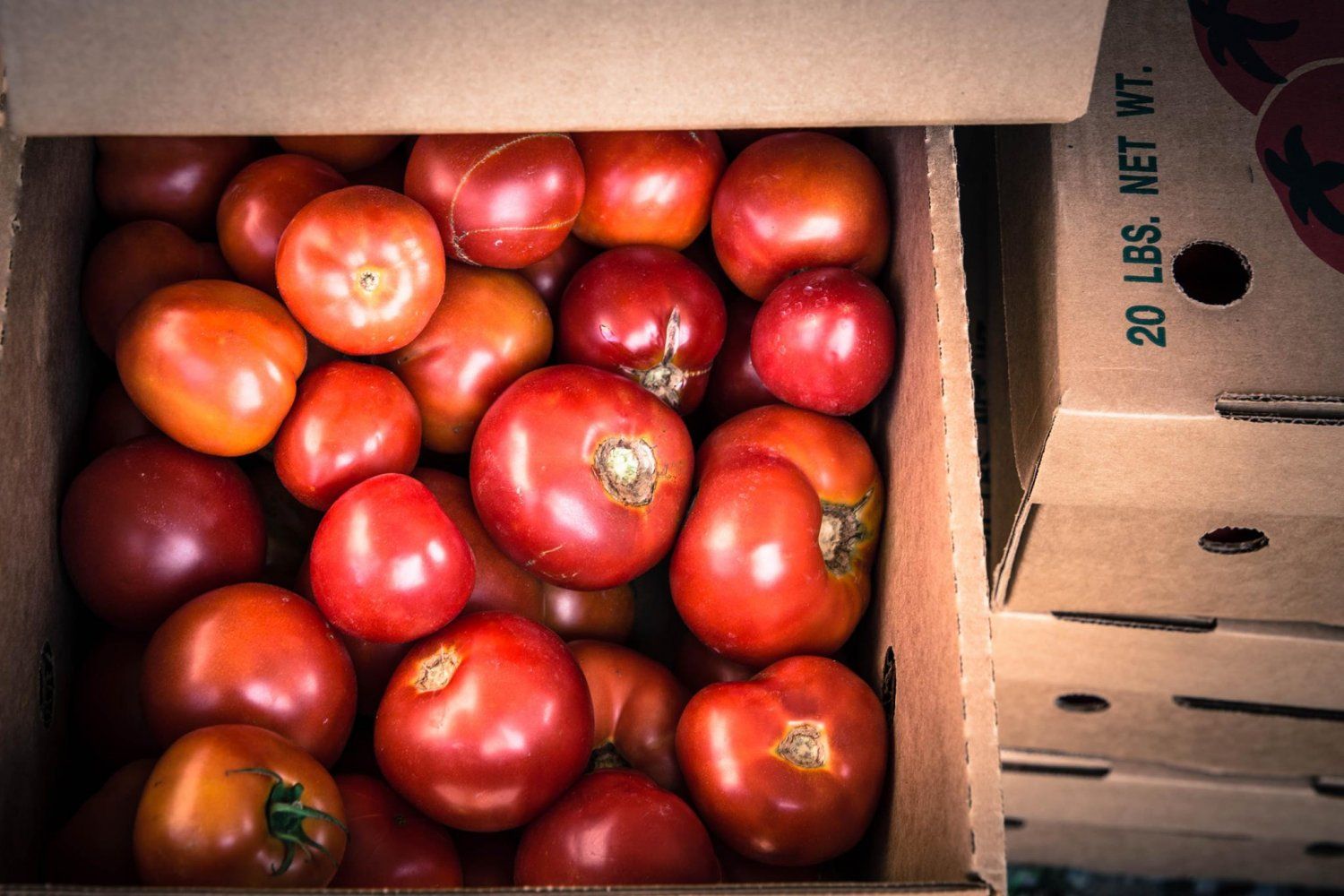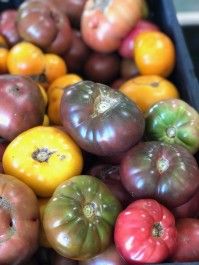The tomatoes are coming in fast and furious now and we are pleased to be able to let folks select their own at their pick up locations. Field ripened tomatoes, especially heirlooms, are fragile and have a relatively short shelf life and are best consumed within a few days. Tomatoes should be stored in a cool area of your kitchen, and not in direct sunlight. If a tomato develops a soft spot, you can usually still use it, if you cut around the spot and use it in a cooked recipe.
We expect to have bulk cases available to purchase as Extras this week for folks that want to can or freeze some for the winter. You can add these when you customize your share.
The first planting of our sweet corn started coming in last week and we expect to see more of it this week. Organic sweet corn is hard to find in stores for several reasons, one of which is that the sweet fragrance of the ripening silk attracts the large female corn worm moths, who like to lay their eggs in the very tip of the developing ear of corn.

Don’t be fooled by their benign appearance, these moths are vicious (and voracious!)
Upon advice from Dr. Jude Boucher from UCONN, we set up traps to monitor the presence of the moths in our field. It is fascinating to note that their presence or absence is related to weather patterns; the strong updrafts associated with summer thunderstorms will relocate them from the moister, coastal areas they tend to inhabit to areas further inland, if that is the direction the storm is travelling.

Depending on the number of moths we collect in the traps, we can decide if and how often we can use a naturally-derived, certified organic treatment to reduce the number of corn ear worms that we might find in our final crop. It is likely a few may slip past us, so if you find a worm in an ear of corn, you need only cut off the tip of that ear where the worm is, as while they are unsightly, they do no harm to the rest of the cob. These little creatures are just one of the trade-offs to having our food produced without the use of synthetic chemicals!

Upon seeding, the corn can get ravaged by crows. Before the ears even begin to form, the corn plant itself must compete with other grassy and weedy species for space and light. Conventional corn producers can use weed-specific herbicides to reduce competitive weeds, but we planted in 30” rows so that the corn can shade out the competition and reduce our need for mechanical weeding. After the corn ears reach maturity, they are then threatened by hungry herbivores.

Deer fencing is not practical on our fields (given their dimensions, locations and need to continually rotate crops in order to promote soil fertility,) and the fields are very close to the Rails-trails so hunting is not usually a great option, therefore we have to hope that we have planted enough to allow the raccoons and deer their “share” and still have enough left for us.
To store your corn at home, place ears of corn in your refrigerator as soon as possible. Leave the husk on, if possible, and let the corn sit in the fridge uncovered. Keep the temperature at or below 40 degrees to reduce the amount of natural sugars in the corn from turning to starch at higher temperatures.
Sweet corn can be enjoyed raw, but boiling is the classic way to prepare it. You can either use a wide, flat pan and lay the corn on its side, or use a taller stock pot to boil a big batch at once. Either way, fill the pan with enough water to cover the corn and bring it to a boil. Shuck off the outer husk and silk from the corn. Dissolve a tablespoon of salt in the water and add the corn. If your corn is very fresh, cook it for 3-5 minutes. If you don’t cook it right away, go for 6-8 minutes. You can also try roasting your corn in the oven, or even microwaving it with the husk still on!




